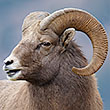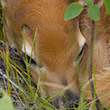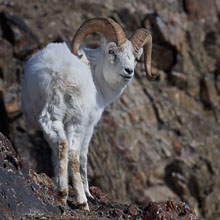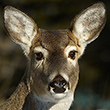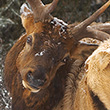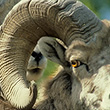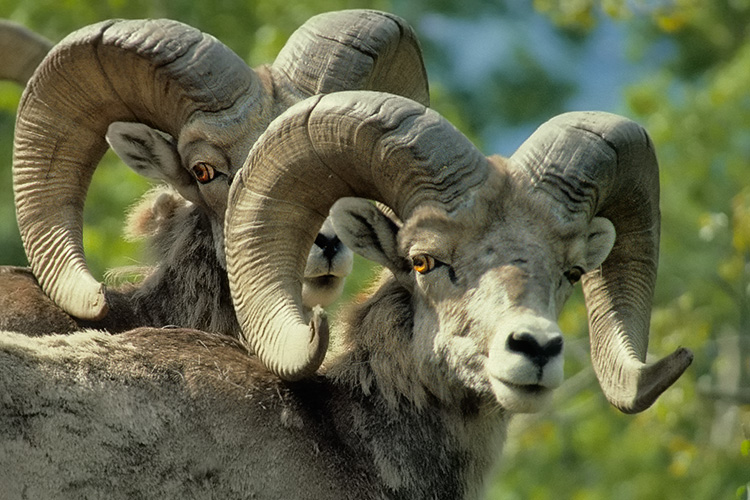
Availability: Undetermined - Enquiries?
In the Field
Really Big-horned Bighorns. Sheep River Wildlife Sanctuary, AB, Canada. May 1981.
This is an "ancient" image pulled from my archives just to prove that I actually did shoot with film at one time! These impressive Bighorn rams (or, by now, more likely their descendants) frequent the upper foothills of the Rocky Mountains just southwest of Calgary, Alberta, Canada. These rams were part of an all-male herd that liked to sun themselves along the steep canyons of the Sheep River (no surprise on how they named that river!). It's a fabulous place and a fabulous place to photograph Bighorn Sheep!
Behind the Camera
Really Big-horned Bighorns. Sheep River Wildlife Sanctuary, AB, Canada. May 1981.
Film Capture; Ektachrome 200; ISO 200.
Minolta X-700 film SLR with 300 mm Rokkor-X F4.5 lens - handheld.
Exposure information not recorded.
At the Computer
Really Big-horned Bighorns. Sheep River Wildlife Sanctuary, AB, Canada. May 1981.
Slide scan to 16-bit TIFF file using Nikon Super Coolscan 5000ED.
All further digital correction on 16-bit TIFF file using Adobe's Photoshop CS2, including selective saturation enhancement, selective lens blur, selective noise reduction (using PictureCode's Noise Ninja Photoshop plug-in) and selective sharpening for web output.
Conservation
Really Big-horned Bighorns. Sheep River Wildlife Sanctuary, AB, Canada. May 1981.
Ten percent of the revenue generated by this image will be donated to the Yellowstone to Yukon Conservation Initiative.
Species Status in Canada*: This species is not designated as at risk.
Bighorn Sheep (Ovis canadensis) are considered by many to be a symbol of mountain wilderness. They are distributed throughout much of the mountainous areas of western North America from central British Columbia south to northern Mexico. Local distribution of Bighorns appears to be limited by the availability of suitable foraging areas near "escape" terrain (cliffs or very steep terrain where they can escape predators).
These Bighorn rams were photographed in the upper foothills of Alberta's western border. While this species is not currently considered at risk, the region this herd was photographed in is considered as of significant importance in maintaining genetic connectivity between northern and southern populations of bighorns.
The Yellowstone to Yukon (Y2Y) Conservation Initiative seeks to ensure that the world-renowned wilderness, wildlife, native plants, and natural processes of the Yellowstone to Yukon region continue to function as an interconnected web of life, capable of supporting all of its natural and human communities, for current and future generations.
*as determined by COSEWIC: The Committee on the Status of Endangered Wildlife in Canada


















